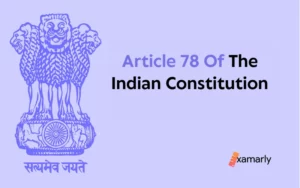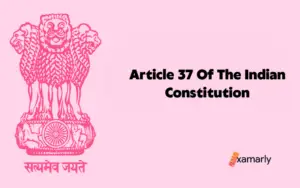The Lodhi dynasty has Afghan roots. After the four dynasties govern the Delhi Sultanate, Lodi Dynasty came next in the year 1451 to do the same. This dynasty had power till the year 1526. The foundation of the fifth and the last dynasty was laid by Bahlul Lodi, thereby ending the Sayyid Dynasty.
Read this article to acknowledge more about this dynasty. Being a part of the Medieval Indian History of UPSC Syllabus, this article will be helpful in your UPSC Preparation.
History Of Lodi Dynasty
The Lodi Empire was formed by the Afghan Ghizali tribe. Before conquering Delhi, Bahlol Lodi made a prudent decision and reaped the benefits of the Sayyid ruler’s vulnerable situation by further taking Punjab.
He took over Delhi’s crown in 1451 and took the name “Bahlol Shah Ghazi” to rule. He overthrew the Sayyid dynasty, thereby starting the last dynasty to govern.
Lodi Dynasty Map

Lodi Dynasty Rulers
The name Lodhi is derived from an Afghan tribe. The Afghan dynasty had been ruled by three rulers: Bahlol Lodhi, Sikandar Lodi, and Ibrahim Lodhi.
Bahlol Lodi: Founder Of Lodi Dynasty
- Bahlul Lodi established the Lodi Dynasty and hence was the first ruler of Lodi Dynasty.
- The reign of Bahlol Lodhi lasted from 1451 until 1458 AD.
- He was a knowledgeable statesman who understood his limitations.
- With his strong personality, Bahlol kept a loose confederacy of Afghan and Turkish chiefs together.
- He made a number of efforts to appease his nobles.
- Bahlul Lodi took Gwalior, Samthal, Sakit, and Mewat under his control.
- Bahlul Lodi was a great monarch who never sat on the throne and instead sat with his nobles on the carpet in front of the throne to earn their support and recognition.
- The most important occasion that occurred during his reign was the capture of Jaunpur. Bahlul devoted the majority of his time to battling the Sharqi dynasty, which he ultimately conquered.
- He passed away in the year 1489.
- Sikandar Khan Lodi Lodhi, who had been engaged in a constant power struggle with his older brother Barbak Shah, superseded Bahlul khan Lodi in 1489.
To know more about the Bahlul Lodi, check out the linked article.
Sikandar Lodi
- The father of Sikandar Lodi was Bahlol Lodi.
- He inherited the throne and took the name, Sikandar Shah.
- Sikandar Shah reigned from 1489 to 1517.
- He established a well-organized spy system.
- Agriculture and industry were both created by him.
- The Hindus were subject to severe restrictions.
- Sikander Lodi liked the music of “Shehnai.”
- During his reign, a piece of music called “Lahjati-Sikandar Shahi” was composed.
- Under the pen name “Gulrukhi,” Sikandar Shah, a poet of repute, wrote poems in the language of Persian.
- Sikandar Shah died in 1517 due to sickness.
To learn more about the Sikandar Lodi, visit the linked article.
Ibrahim Lodi
- In 1517, Ibrahim Lodi, the oldest son of Sikandar Lodhi, ascended to the throne.
- Although he possessed the traits of a great fighter, his choices and acts were hasty and undiplomatic.
- Jallal Khan was slain by Ibrahim Lodhi.
- Ibrahim Lodhi made an effort to increase royal authority.
- Ibrahim Lodhi was a rigid and intolerant ruler.
- For nearly ten years, Ibrahim suppressed the resistance despite repeated uprisings.
- Numerous aristocrats had been disgraced by Ibrahim Lodhi, and others had been brutally murdered.
- Dilwar Khan Lodhi was likewise cruelly handled by Ibrahim Lodi.
- He perished fighting to prevent the extinction of the Lodi Dynasty while spending most of his rule at war with the Afghans and the Mughal Empire.
- Ibrahim suffered a loss at the Battle of Panipat in 1526. As an outcome, the Lodi Dynasty came to an end and Babur’s Mughal Empire rose to power.
To know more about Ibrahim Lodhi, visit the linked article.
First Battle Of Panipat
- Daulton Khan Lodhi, the governor of Punjab, invited Babur to succeed Lodhi. Eventually, Babur arrived in India and vanquished Lodhi.
- The First Battle of Panipat is the name of the war that was fought between Ibrahim Lodi and Babur.
- Babur overcame Ibrahim Lodhi on the battleground, killing him. Ibrahim Lodhi’s downfall brought an end to the Delhi sultanate.
Administration
Many fresh administrative policies were put into place during this time. Additionally, Afghan royalty substantially diverged from Turkish notions. This change may be seen in how almost all administrative policies are created.
Bahlol Lodi
- The Turkish Sultans had a highly concentrated system of government. The Sultan had unquestionable power.
- He was forced to agree to his fellow Afghans’ requests since he had no other option.
- The Afghan nobles had to have total local control.
- They had no other relationship with the Sultan other than to serve him in the military when required.
Sikandar Lodi
- It is acknowledged that Sultan Sikandar Lodi built a reliable administrative system.
- To examine muqtas’ and walis’ accounts, he implemented auditing.
- The first aristocrat to have his finances examined in 1506 was the governor of Jaunpur, Mubarak Khan Lodi (Tuji Khail).
- He was dismissed after being found guilty of embezzlement. A parallel jail sentence for corruption was meted out to Khwaja Asghar, a non-Afghan officer-in-charge in Delhi.
- The Sultan realigned the intelligence apparatus so that he would always be aware of the status of the Empire.
- Due to their fear of offending Sultan Sikandar Lodi, the nobles avoided discussing political matters among themselves.
- The Empire supported educational institutions financially and patronized scholars and poets. In government agencies, he outlawed the use of any language apart from Persian.
- Babur was shocked to discover that there were only Hindus working in the revenue department when he first arrived in India.
Ibrahim Lodi
- Ibrahim advanced the centralization process. According to him, “kingship knows no kinship.” Under him, the Sultan’s standing increased to the point where even the royal tent was thought to be deserving of respect.
- Ibrahim’s actions, however, had major repercussions and were not in the best interests of the Afghan monarchy.
- The Afghan aristocracy was poorly prepared for the master-servant dynamic. This sparked unrest and uprisings, and some even worked with Babur to dethrone the Sultan.
To learn about the Delhi Sultanate Administration, check out the linked article.
Economy
- History records Sikandar Lodhi as a truly zealous Sunni ruler who ruined Indian temples at Naga Port and Mathura.
- To prove the superiority of Islam, he put Jaziya on Hindus.
- He devised the 32-digit Gaz-i-Sikandiri to help farmers measure their farmed lands.
- He established Agra city in the year 1504 and constructed opulent tombs and structures.
- He played a significant role in boosting the economy by easing imports and exports.
- Food grain taxes are not applied to farmers.
Religion
- Similar to their forebears, the Lodhi Sultans portrayed themselves as the Abbasid Caliphs’ deputies and acknowledged the Caliphate’s dominance over the Muslim world.
- The Quraysh tribe, Muhammad’s purported descendants, Sufi shaikhs, and Muslim ulama were all given financial stipends and revenue-free properties, including whole villages.
- Muslim followers of the Lodis were obligated to pay the zakat tax for religious reasons, while non-Muslim subjects were obligated to pay the jizya tax in exchange for governmental protection.
- In various areas of the Sultanate, Hindus were subject to an extra pilgrimage tax. However, the revenue management of the Sultanate employed a number of Hindu officers.
- Hindu-born Sikander Lodi utilized rigorous Sunni orthodoxy as a political gimmick to show his Islamic legitimacy.
- Under pressure from the ulama, he permitted the assassination of a Brahman who said Hinduism was equally authentic to Islam; he demolished Hindu temples as well.
- He also forbade women from entering the Mazars of Muslim saints and the yearly procession of Salar Masud’s spear, a legendary Muslim martyr.
- He also set up Sharia courts in a number of cities with substantial Muslim populations, enabling the qazis to implement Islamic law to people of all faiths.
Art and Architecture Of Lodi Dynasty
The practice of blending Tughlaq and Turkish architectural styles was continued by the Lodhi Sultans. Both arches and beams, as well as balconies, caves, and mandaps in the Rajasthani and Gujarati styles, are featured in their structures. The Lodhi Sultans also adopted a new architectural style, such as the building of tombs on a raised platform to give them a high, colossal appearance.
Other traits of these structures included their regularity, large interior spaces, tall domes, arched doorways, etc. Some tombs were built within the parks during this time. Sikandar Lodi Tomb was one of them which was built in the Lodi Garden.
There were few octagonal graves built at this time. The Mughals later incorporated some of these traits as well. During this time, colored covering was used to embellish the domes’ exterior layer.
Some of the fine examples of the Delhi Sultanate Monuments constructed at that time were:
- The Bara Gumbad at Delhi’s Lodhi Gardens, which was completed in 1490 CE, most likely by Sikandar Lodhi, is thought to have Delhi’s oldest entire dome.
- Between 1489 and 1517 CE, the Lodhi Dynasty constructed the Shish Gumbad mausoleum.
- In 1516, Sikandar Lodi built the Rajon ki Baoli stepwell.
- The finest structure from this time period was the mausoleum of Sikandar Lodi, which Ibrahim Lodhi constructed in 1517. The tomb is enclosed by a substantial outside wall, and an eight-pillared canopy surrounds its dome.
- The finest mosque built during the Lodhi era was the “Moti ki Masjid” mosque, which was created by the wazir of Sikandar Lodi.
- The lords’ tombs are not devoid of dignity and strength, and the most significant ones are those of Taj Khan, Chhote Khan, Bare Khan, Shihab-ud-Din’s tomb, Dadi ka Gumbad, and Poti ka Gumbad.
To learn more about the Art And Architecture Of Delhi Sultanate, check out the linked article.
Coins
Coins made of copper and billon were set after Bahlol Lodi was crowned. New copper coins known as Bahloli coins were introduced by him.
Downfall Of Lodi Dynasty
- The Lodi Dynasty’s governmental framework had already disintegrated by the time Ibrahim succeeded to the throne as a result of deserted trade routes and a dwindling treasury.
- The Deccan was a major coastal trade route, however, the supply networks had degraded by the end of the 15th century.
- The Lodi empire was cut off from commodities coming from the coast to the interior due to the deterioration and eventual demise of this particular trading route.
- Due to their inability to defend themselves if an event of conflict broke out on trade route roads, the Lodi Dynasty avoided using those routes, which led to a loss in trade and treasury and made them more susceptible to internal political issues.
- Daulat Khan Lodi, the governor of Lahore, demanded that Babur, the ruler of Kabul, invade his country in retaliation for Ibrahim’s insults. Therefore, during a fight with Babur, Ibrahim Lodi passed away.
- The Lodi dynasty was overthrown with the demise of Ibrahim Lodi.
Conclusion
75 years of Lodhi Dynasty rule came to an end in 1526 with Ibrahim Lodi’s defeat, thereby ending the Delhi Sultanate that ruled the northern region of India for 320 years. It is certain that the Sultanate of Delhi was a prominent “Muslim sultanate.” In contrast, this sultanate’s final ruling dynasty was notable because, in the course of its brief reign, it made a significant contribution to history. Even though “Ibrahim Lodi” didn’t play a particularly significant role as a ruler, his father, “Sikandar Lodhi,” was a clever emperor who used a variety of strategies to expand his empire.
FAQs
What Was The Lodi Dynasty Time Period?
The timeline of the Lodi Dynasty was of 75 years. This dynasty rose to the power in 1451 and lasted till 1526 and eventually collapsed after the defeat of Ibrahim Lodi in the first battle of Panipat
Who Was The Founder Of Lodi Dynasty?
The Lodhi Kingdom has Afghan Origin and was founded by Bahlol Lodi.
Who Was The Last Ruler Of Lodi Dynasty?
Ibrahim Lodi was the last Lodi Sultan to govern the Lodi Kingdom.
Who Asked Babur To Invade India?
Daulat Khan asked the Babur to invade India.
Who Destroyed the Lodi dynasty?
Babur brought down the Lodi Dynasty and Babur’s Mughal Empire was established in India.






